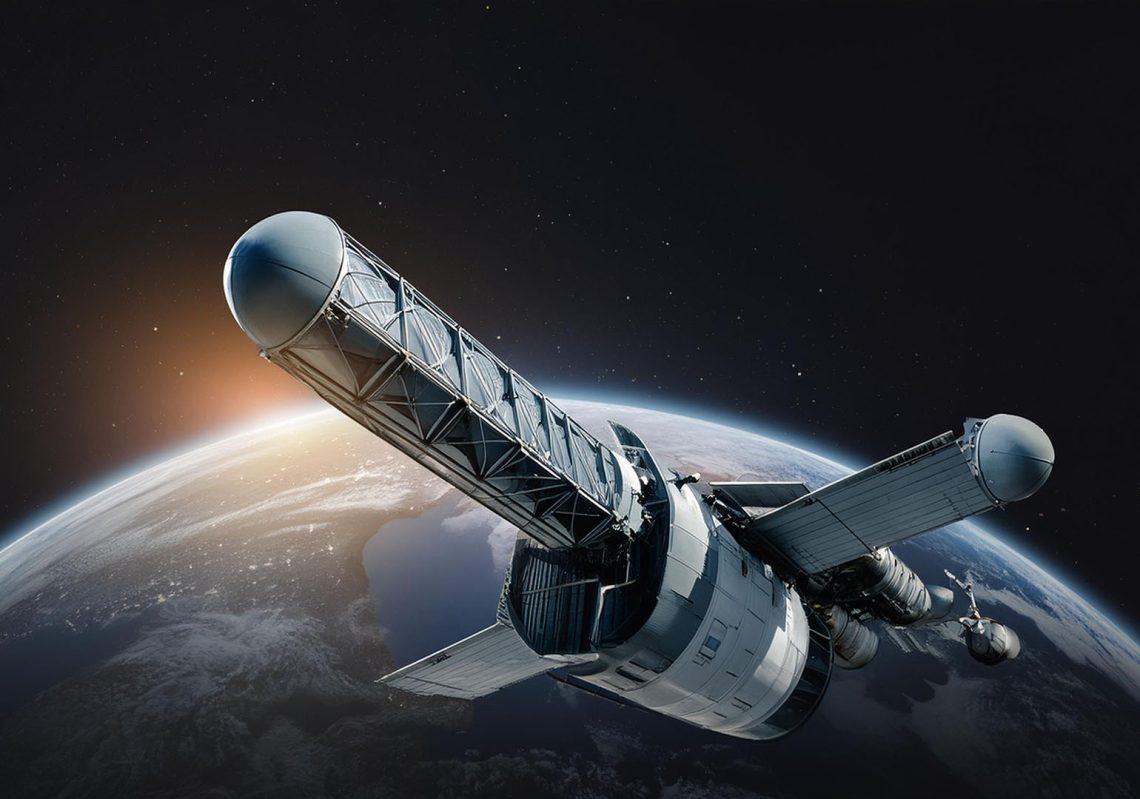Data centres demand enormous power and generate immense heat – and these operators are looking at placing them in outer space.
By 2026, total global electricity consumption from data centres could reach more than 1,000 TWh. According to the International Energy Agency, this is equivalent to the electricity consumption of Japan.
An EU-backed study found that space-based data storage facilities would benefit from “infinite energy” captured from the sun. The initiative has been set up by the Advanced Space Cloud for European Net Zero Emission and Data Sovereignty (ASCEND).
The EU plans to build 13 space-based data centre blocks at an altitude of around 1,400 km – about three times the altitude of the International Space Station. But although abundant solar energy seems like an obvious benefit, this may not be so simple.
“In order to power a data centre we need a football field worth of solar panels,” Rick Ward, CTO and Founder of OrbitsEdge, told create. “Can we have thousands of football-sized fields ripping through the already crowded low-earth orbit?
“Also, if we’re looking at a Mars orbit, the solar power generated would be less than 40 per cent of what’s available on earth. The space sector will increasingly look towards nuclear energy to meet its power requirements.”

Space-based manufacturing
OrbitsEdge is designing systems that allow regular commercial, off-the-shelf hardware to operate in space.

“We’re creating a radiation shielding and thermal management solution to be able to fly current-generation popular, powerful computers in space,” Ward explained. “If we can create a vault that can get rid of the heat, then anything that fits inside that vault can work.”
Ward is developing two products – Edge One and Edge 10, so named because of their relative power requirements. Edge One will feature Qualcomm’s Snapdragon processor while the Edge 10 is built on NVIDIA’s Jetson platform.
“We’re looking at providing autonomy, AI, Earth observation analytics and … lights-out manufacturing,” Ward said. “If someone wants to … [manufacture] in space, they’ll basically do that onboard a satellite and we can provide the computer for that.”
Ward and his team have also developed Overwatch, a software component that monitors and mitigates radiation.
“In the event of solar storms or other radiation events penetrating the shielding, we can take protective actions to defend the data and the hardware.”

Immediate application
High launch costs make it difficult to situate a terrestrial data centre in space, according to Dr Jeremy Straub, Associate Professor of Computer Science at North Dakota State University.

“I could see such centres used for data that originates in space, or data where you’re already using space for transmission,” he said.
“Take an agricultural case where a satellite is doing aerial sensing of farmland. If we put a little bit more processing power on the satellite that’s doing the data collection, we can answer the farmer’s question rather than sending down a bunch of farm field images.
“You’re saving on transmission costs, power, even the endpoint compute that’s required. This would be one area where I would certainly see space being very relevant to data processing and storage.”
He sees one area for immediate application.
“Imagine being able to rent a GPU for image processing in orbit because you have data that’s originating in orbit. You don’t want to bring it all the way back to Earth since you’re going to need to send it to another point in orbit.”
Given the rapid evolution of data centre hardware and the increasing number of systems shot into orbit, there is the growing risk of obsolete systems contributing to space junk. Currently, the number of objects larger than one millimetre in space exceeds 100 million and the amount of material orbiting the Earth exceeds 9,000 t.
Ward is a big proponent of recycling in space than of deorbiting; with the latter there is a strong likelihood of creating debris when components do not burn up completely on re-entry to the Earth’s atmosphere. Ward is also considering using the Eris orbital launch vehicle from Queensland-based Gilmour Space for a forthcoming mission.
Upgrades too, are a challenge given the rapid rate of hardware obsolescence.
“How relevant is a 20-year-old server?” Ward said.
The economic factor
Ward is architecting the ability to swap out computer components periodically in space and not having to bring it back.
“We can refresh a unit and have it updated and operational for several more years.”
Hewlett Packard Enterprise is one of the pioneers in space-based computing. The HPE Spaceborne Computer, launched in January 2024, is exploring how data centre processing, AI and high-performance computing can be done in space.
The computer has over 130 TB of flash-based storage, the most storage ever to travel to the space station on a single mission.
On earth, data centre components are typically rectangular in shape to optimise space when racked. The orbiting station, however, is an assembly of modules in a cylindrical shape. The design of HPE Spaceborne Computer thus started with an exercise of design and geometry to make four-sided shapes into circles.
“If budget and logistics aren’t considerations, we could have a data centre in space today from a purely technical perspective,” Straub said. “We’re not waiting on some special technology that’s required to make it happen. Rather, the economics aren’t there yet to drive the need.”
So goes the story of data centres in space – but how effective is undersea cooling of data centres?



